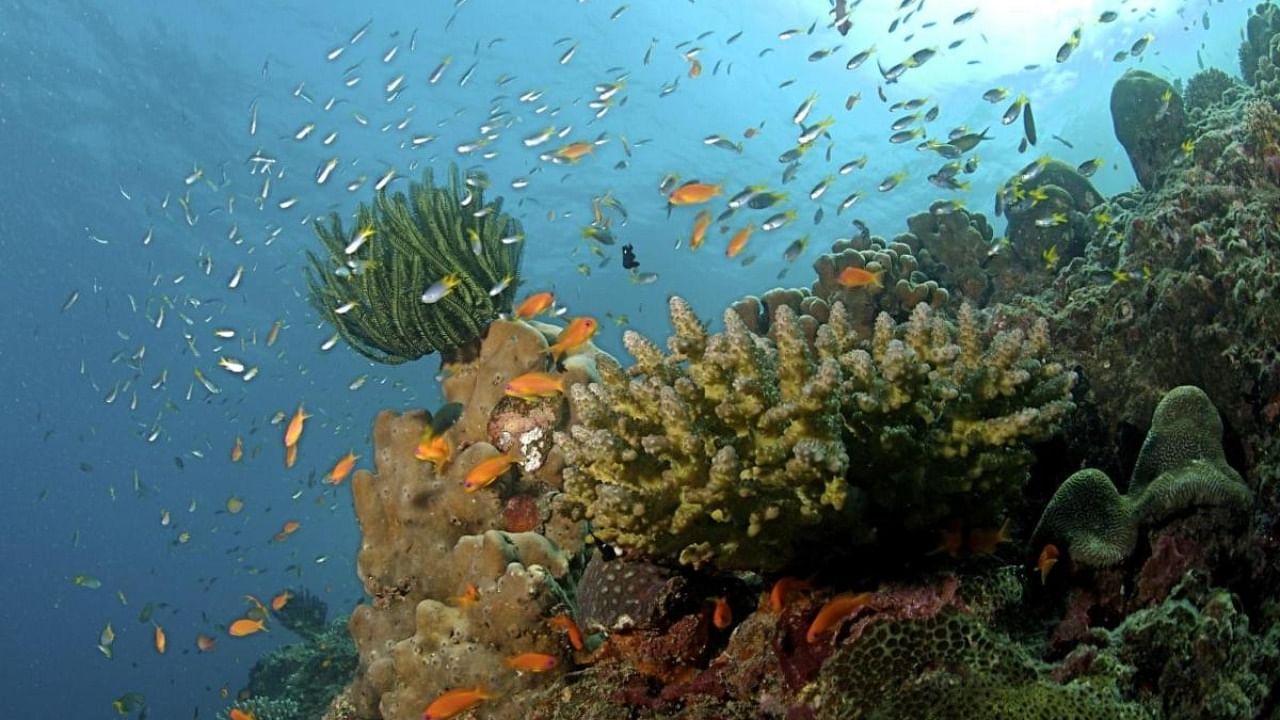

This Earth Day, here are a few initiatives from across the country that are helping protect fragile ecosystems and some environmental issues that call for our immediate attention.
Rebuilding coral reefs
Coral reefs are diverse ecosystems that support thousands of species, including reef fish, invertebrates and plants. In India, these reefs are present in the Andaman and Nicobar Islands, Gulf of Mannar, Palk Strait, Gulf of Kutch and Lakshadweep islands. Coral bleaching due to acidification of the oceans and global warming, overfishing and marine pollution have degraded many coral reefs worldwide, including in India.
In nature, reefs regenerate from small coral fragments — a technique many efforts are now using to restore coral reefs quickly. ReefWatch, a marine conservation organisation, launched a project called Re(ef)Build in the Andamans. It aims to rescue naturally broken coral fragments by reattaching them to metal structures, thereby creating artificial reefs. Under its Re(ef) Generate programme, a low voltage electric current is passed through these metal frames to improve coral health and growth rates. In Goa, the organisation Coastal Impact is involved in similar transplanting and rescuing of corals. The Coral Reef Recovery Project conserves the coral reefs in the Gulf of Kutch, Gujarat.
Read | Green emergencies in the time of Covid-19
Grasslands occupy about a quarter of India’s area and are found in the Himalayas, coastlines, Western Ghats, riverine ecosystems, and wet and arid regions. They are home to some endangered wildlife, including the almost-extinct Great Indian Bustard, and serve as grazing grounds for nomadic pastoralists. In recent years, overgrazing by livestock, uncontrolled growth of invasive plants, climate change and human destruction have posed a significant threat to the grasslands.
In India, efforts are on to reclaim the grasslands by limiting grazing activities, maintaining seed banks of local grass species, removing invasive plants, and promoting grass growth. In Gujarat’s Kutch, Banni grasslands are affected by overgrazing and the invasive plant Prosopis juliflora. The Gujarat Institute of Desert Ecology has focused on fencing, ploughing and weeding patches of Banni grasslands and developing alternative livestock fodder. In the Western Ghats, efforts are on to identify and restore patches of Shola grasslands. In Karnataka and Maharashtra, seed banks have been maintained to restore degraded grasslands.
Stemming desertification
The Thar desert in Rajasthan is spread over 2.34 million sq km and is expanding into 12,000 hectares of productive land each year. Although regarded as ‘barren’, this arid region with few shrubs and patches of grass is home to several raptors, about 23 species of rare lizards and 25 species of snakes. It is also the most populated desert in the world.
Since the 1960s, there have been several attempts to stop the desertification of croplands surrounding the Thar desert and restore the desert ecosystem. These include afforestation programmes to stabilise dunes and construction of a 649 km-long canal as a water source for the region. In 2018, an ambitious project called Maruvan was started to restore the native forests by developing native tree species seed bank, a functional nursery and making patches of forest using Miyawaki method. Several hand-dug wells, ponds and canals and rainwater harvesting systems have also been built under this project.
Reforesting the rainforests
Much of India's tropical rainforests are found in the mountainous Western Ghats and the greater Assam region in the northeast. A UNESCO World Heritage Site and one among the eight global hotspots of biodiversity, the Western Ghats is home to more than 15,000 species of plants and animals—some of which are found nowhere else in the world. But in the last two centuries, the deciduous and evergreen forests have been felled to make way for coffee, tea and teak plantations. Besides, invasive plants have conquered these forests, replacing many native plants.
Several reforestation and restoration efforts in the Western Ghats and the greater Assam region are trying to bring back the charm of these degraded forests. The Nature Conservation Foundation works with tea and coffee plantation companies in the Anamalai Hills of Western Ghats to identify and protect patches of rainforests by planting native tree saplings and clearing invasive plants like the Lantana. WeForest, an organisation working in the Khasi Hills of Northeast India, involves Khasi people to restore the landscape by planting saplings, removing weeds and protecting existing trees.
Saving the mangroves
Mangroves are tropical trees which have adapted to grow in coastal water. India’s mangrove cover of 4,900 sq km is home to endangered Bengal tigers, fishing cats, otters and saltwater crocodiles. Mangrove forests play a significant role in preventing floods and tsunamis and store almost four times more carbon than rainforests.
In the last 50 years, nearly half of the world's mangroves have been destroyed due to human activities. This has increased the risk to lives and economic losses caused by floods and tsunamis.
Many organisations are now trying to restore degraded mangrove forests by planting mangrove tree saplings. In the Gulf of Kutch in Gujarat, grey mangrove (Avicennia marina) saplings are grown in nurseries and then transplanted along the coastlines. Similar restoration efforts are underway in Kerala and Tamil Nadu. In the Sundarbans, the world's largest mangrove forest, afforestation programmes by the Nature Environment and Wildlife Society have brought back parts of mangroves to life.